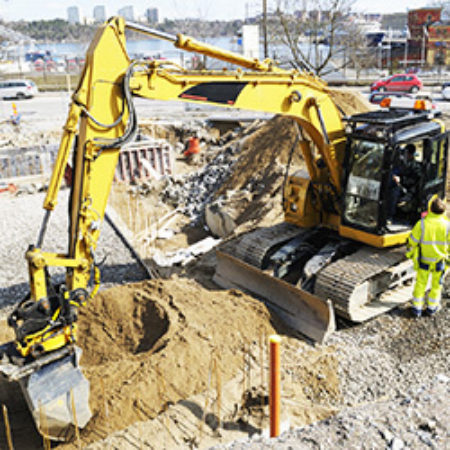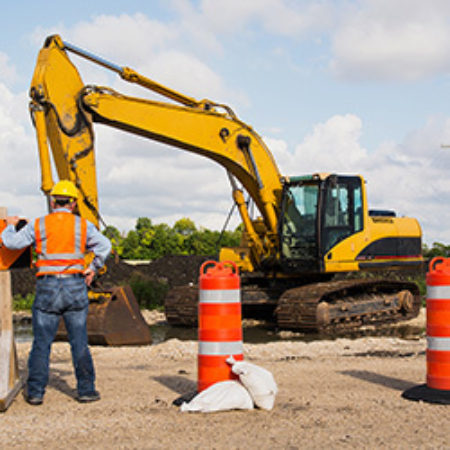Construction Consulting: Ensuring Safety & Best Practices For Excavation and Trenching at Construction Sites
After a long, snowy winter in the Northeast, spring is finally here. In the construction industry, this means much more excavation is underway again. So, there’s no better time to review the best practices for excavation safety and operations. Excavation-related accidents, where best practices are not followed, can lead to serious injuries and fatalities, long delays on construction projects, and even expensive fines and lawsuits. Read this recent refresher article on Beacon’s website to learn more about best practices for construction site excavation and trenching.
Knowing the best practices for site excavation (and trenching) projects is imperative for the overall safety of workers and success of projects. It is estimated that hundreds of workers die each year and thousands more are injured (in the U.S.) as a result of excavation-related accidents.
Excavation-related problems on construction sites can include:
- Injuries and fatalities
- Damage to underground (and above-ground) utilities and infrastructure
- Fines as a result of work done without proper permits
- Project delays related to all of the above
- Insurance Claims and lawsuits
Planning and Permitting. Knowing both the federal and local rules and regulations is a key requirement for ensuring that excavation projects avoid the most common pitfalls. The OSHA Excavation and Trenching standard, Title 29 of the Code of Federal Regulation (CFR), Part 1926.650, covers requirements for excavation and trenching projects. The following OSHA web page highlights some of the key elements of the standard, including ways to protect employees against cave-ins, and describes safe work practices for employees at excavation sites (http://1.usa.gov/1a2qb1L ).
Twenty-five states have OSHA-approved State Plans and have adopted local standards and enforcement policies related to excavations and trenches. For the most part, these state standards are similar or identical to OSHA's requirements. In urban and suburban areas, there are often local permitting requirements too. Reputable excavation contractors should be experienced with local regulations and permitting requirements. Good contractors will also have well-trained field personnel and their own safety programs. However, construction site superintendents and project manager should also be aware of the local regulations (and best practices) to identify issues before they become major problems.
Key things related to excavation project planning (and bidding) include understanding site-specific conditions for:
- Traffic
- Proximity of nearby structures
- Soil conditions
- Surface & ground water
- Location of the water table
- Overhead and underground utilities
- Weather
Call Before You Dig. Knowing the location of underground utilities is essential before digging. Buried utility lines (gas, power, oil, sewage, water, steam, telecom, etc) and other equipment must be located (and marked) in advance (and avoided when digging). Local utility companies must be involved in marking the locations of buried lines (and sometimes excavating and/or de-energizing equipment). Utilities must sign off before any digging begins. The following website lists state-by-state websites, contacts and telephone numbers to contact for local help with identifying the location of underground utilities (http://bit.ly/1ybApZs ).

Many states now have centralized ticketing systems to coordinate line location requests for contractors seeking to dig. These services automatically alert the participating utility companies who must respond within a specific time frame. For example, in New York State, “Dig Safely New York” operates a single-ticket system whereby requests to dig are filed online, utilities respond, and the process is tracked to ensure that companies are not digging in advance of marking and approval.

Marking Excavation. The following image shows the standard colors used for marking buried utilities. Local guidelines dictate what clearance must be maintained (offset distance between buried utilities and the excavated area). Do not start an excavation until all utilities have responded to the stakeout request because markings at a site do not necessarily indicate that a site has been cleared for excavation. Excavators can help utility companies by marking the location of the proposed excavation site with white paint before requesting a utility survey. Avoid using colors that can be confused with the standard color codes shown in the image.
On-Site Saftey & Operations. OSHA’s excavation standards require that a “Competent Person” be present on a job site whenever workers are exposed in an excavation.
A“Competent Person” is defined to be:
- “Someone who is capable of identifying existing or predictable hazards in the surroundings or working conditions that are unsanitary, hazardous, or dangerous to employees” and
- “Someone who has the authorization to take prompt correct measures to eliminate them.”
A competent person should be appropriately trained and knowledgeable in all of the following areas:
- Best practices for personnel protection (such as shoring excavation walls, shielding personnel, safety barriers, ensuring easy access and egress from excavations, preventing cave-ins, understanding soil types and stability, identifying hazardous conditions, and managing excavation drainage)
- How a trench differs from other types of excavations and the different safety requirements for trenches versus other types of excavations
- Inspecting excavations on a daily basis, especially following rain or other weather events, to ensure safe working conditions
- How to respond to emergencies
- Assessing trenches and excavations for hazardous conditions (such as water buildup, gas leaks, exposed utility lines, etc)
- Assessing whether excavations are affecting the stability of adjacent structures, roadways, walkways, or other site features
There are many training companies offering courses for Competent Person training (to meet OSHA excavation safety requirements). However, training should also be combined with real-world experience, gained under the guidance of experienced industry professional.
Useful Links:
OSHA Excavation Requirements Summary: http://1.usa.gov/1PjsFK6
Daily Inspection Checklist: http://1.usa.gov/1CbiMoJ
Contact Beacon Consulting Group, Inc. for any construction-defects-related assignments, construction consulting/management projects, or surety consulting services.

